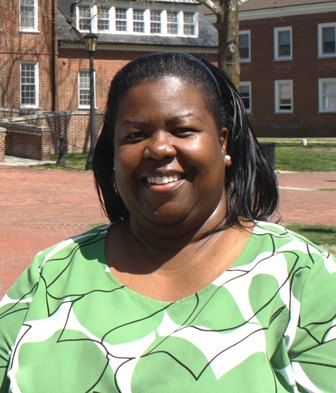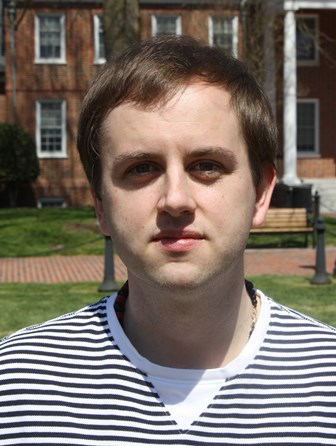
Pharmacy professor & alum secure U.S. Patent for new drug
Friday, April 27, 2018
A medical research project Dr. Patrice L. Jackson-Ayotunde began seven years ago has earned the University of Maryland Eastern Shore pharmacy professor a U.S. Patent.
Jackson-Ayotunde received word April 3 from the U.S. Patent and Trademark Office that officially acknowledges her discovery of a chemical formula for new medication to treat epilepsy.
Epilepsy is a chronic neurological disorder characterized by recurring seizures, which can be debilitating. Some patients experience multiple episodes daily.
Jackson-Ayotunde, an associate professor in the School of Pharmacy and Health Professions, shares discovery credit with Dr. Tawes Harper, a 2013 UMES pharmacy program graduate who assisted her with the research.
She is the second faculty member in the past 20 months to be a primary recipient of a U.S. Patent assigned exclusively to UMES. Engineering professor Yuanwei Jin earned one in mid-2016 for his “smart structure” sensing device capable of detecting metal fatigue.

“I was overjoyed,” Jackson-Ayotunde said, adding “I could feel a large weight had been lifted”. “It was gratifying to know that a lot of hard work was being recognized.”
An estimated one in 26 people will develop epilepsy in their lifetime, according to the Epilepsy Foundation. Worldwide, an estimated 65 million people have been diagnosed with the condition.
How quickly her idea for a new medication can make its way to the marketplace depends on whether pharmaceutical companies see promise in it and are willing to invest millions of dollars into years of clinical research. Jackson-Ayotunde and UMES stand to benefit financially should it someday land on pharmacy shelves.
Moving a patent-worthy medicinal finding safely from lab-to-patient, however, can take 15-to-20 years.
Nonetheless, Jackson-Ayotunde and Harper provided a road map for a prescription drug their research shows can reduce or eliminate the onset of seizures in people who have not been helped by other medications.
“It’s an honor to be a small part of a bigger picture scenario,” Harper said. “I haven’t gotten to the place where I think about my role. I’m very excited, though, for Patrice because she has devoted an unbelievable amount of time to this effort, and I’m glad it’s paid off for her.”
Since joining UMES’ faculty in 2010, Jackson-Ayotunde’s research has focused on designing and producing anticonvulsant analogs as agents for the treatment of therapy-resistant epilepsy. She and Harper initially identified a dozen compounds that showed anti-epileptic properties in multiple animal models with limited-to-no-observed neurotoxicity. Jackson-Ayotunde has found nine more compounds with similar characteristics since initially applying for a patent.
“I am extremely proud of Dr. Jackson-Ayotunde,” pharmacy dean Rondall E. Allen said. “She has done a great job in identifying new compounds to treat seizures. Her research efforts have come to fruition.”
The patent award marks the culmination – at least for the moment – of 18 years of trial-and-error work dating back to Jackson-Ayotunde’s days as a doctoral candidate in medicinal chemistry at Howard University, where she studied under the tutelage of Dr. Kenneth Scott.
“It’s been part of my life for as long as I can remember,” she said. “It’s the journey I’m on. I’m just a scientist in the field looking to find a cure for epilepsy.”
Jackson-Ayotunde is quick to credit her success in research to the work of graduate, professional, and undergraduate students who have worked alongside her. She has mentored and trained 15 pharmacy students, three undergraduate students, and currently has one Ph.D. student working in her lab.
Jackson-Ayotunde’s own grad school mentor at Howard also did research on epilepsy and she has continued to build on the foundation he laid. She also was inspired by a nephew who had a related neurological disorder but has since grown out of it.
A preliminary application was submitted to the U.S. Patent and Trademark office in 2013 and in the ensuing years, Jackson-Ayotunde fielded a barrage of questions through a vetting process she said is exponentially more grueling than defending a doctoral dissertation.
“What we are doing is significant, and novel,” she said. “It’s original work.”
A wide range of treatments for epilepsy exist, but 25-to-30 percent of the nation’s three million epilepsy patients do not have complete control of their seizures, or may suffer side effects from anti-epileptic drugs.
That leaves a significant portion of the population without adequate treatment and a great need for the development of new treatments to help those patients. That’s what motivates Jackson-Ayotunde to be an educator-researcher, who says the patent only drives her to keep searching for more answers.

